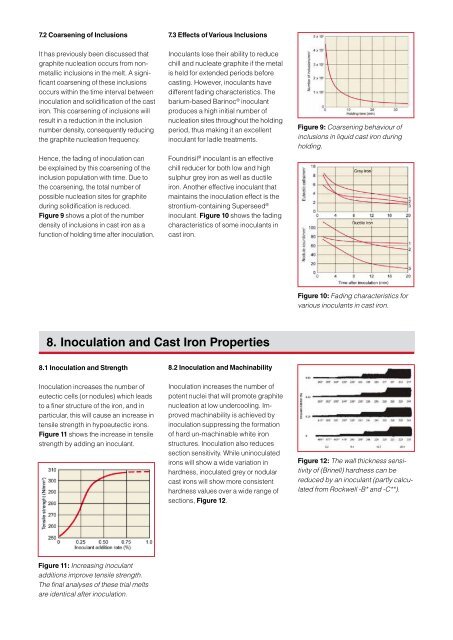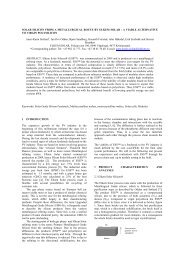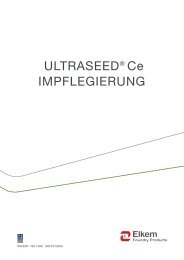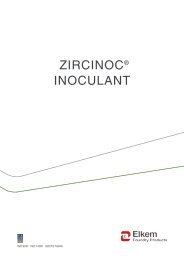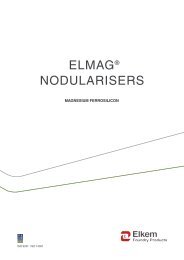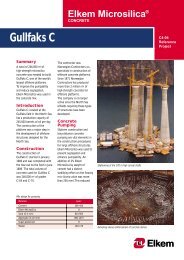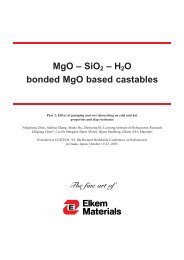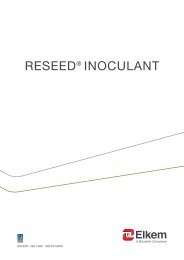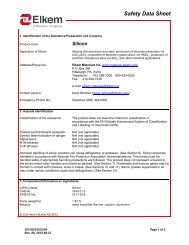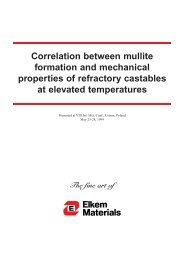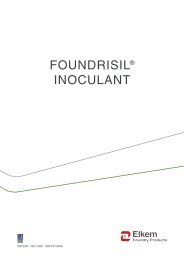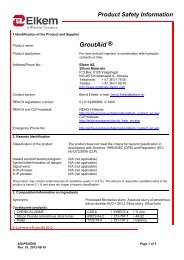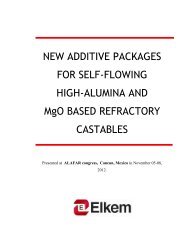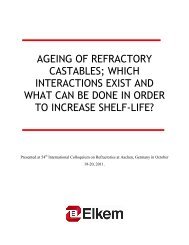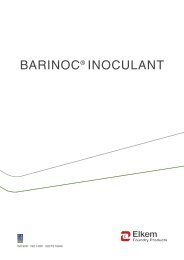CAST IRON INOCULATION - Elkem
CAST IRON INOCULATION - Elkem
CAST IRON INOCULATION - Elkem
You also want an ePaper? Increase the reach of your titles
YUMPU automatically turns print PDFs into web optimized ePapers that Google loves.
7.2 Coarsening of Inclusions<br />
It has previously been discussed that<br />
graphite nucleation occurs from nonmetallic<br />
inclusions in the melt. A significant<br />
coarsening of these inclusions<br />
occurs within the time interval between<br />
inoculation and solidification of the cast<br />
iron. This coarsening of inclusions will<br />
result in a reduction in the inclusion<br />
number density, consequently reducing<br />
the graphite nucleation frequency.<br />
Hence, the fading of inoculation can<br />
be explained by this coarsening of the<br />
inclusion population with time. Due to<br />
the coarsening, the total number of<br />
possible nucleation sites for graphite<br />
during solidification is reduced.<br />
Figure 9 shows a plot of the number<br />
density of inclusions in cast iron as a<br />
function of holding time after inocu lation.<br />
7.3 Effects of Various Inclusions<br />
Inoculants lose their ability to reduce<br />
chill and nucleate graphite if the metal<br />
is held for extended periods before<br />
casting. However, inoculants have<br />
different fading characteristics. The<br />
barium-based Barinoc ® inoculant<br />
produces a high initial number of<br />
nucleation sites throughout the holding<br />
period, thus making it an excellent<br />
inoculant for ladle treatments.<br />
Foundrisil ® inoculant is an effective<br />
chill reducer for both low and high<br />
sulphur grey iron as well as ductile<br />
iron. Another effective inoculant that<br />
maintains the inoculation effect is the<br />
strontium-containing Superseed ®<br />
inoculant. Figure 10 shows the fading<br />
characteristics of some inoculants in<br />
cast iron.<br />
Figure 9: Coarsening behaviour of<br />
inclusions in liquid cast iron during<br />
holding.<br />
Figure 10: Fading characteristics for<br />
various inoculants in cast iron.<br />
8. Inoculation and Cast Iron Properties<br />
8.1 Inoculation and Strength<br />
Inoculation increases the number of<br />
eutectic cells (or nodules) which leads<br />
to a finer structure of the iron, and in<br />
particular, this will cause an increase in<br />
tensile strength in hypoeutectic irons.<br />
Figure 11 shows the increase in tensile<br />
strength by adding an inoculant.<br />
8.2 Inoculation and Machinability<br />
Inoculation increases the number of<br />
potent nuclei that will promote graphite<br />
nucleation at low undercooling. Improved<br />
machinability is achieved by<br />
inoculation suppressing the formation<br />
of hard un-machinable white iron<br />
structures. Inoculation also reduces<br />
section sensitivity. While uninoculated<br />
irons will show a wide variation in<br />
hardness, inoculated grey or nodular<br />
cast irons will show more consistent<br />
hardness values over a wide range of<br />
sections, Figure 12.<br />
Figure 12: The wall thickness sensitivity<br />
of (Brinell) hardness can be<br />
reduced by an inoculant (partly calculated<br />
from Rockwell -B* and -C**).<br />
Figure 11: Increasing inoculant<br />
additions improve tensile strength.<br />
The final analyses of these trial melts<br />
are identical after inoculation.


